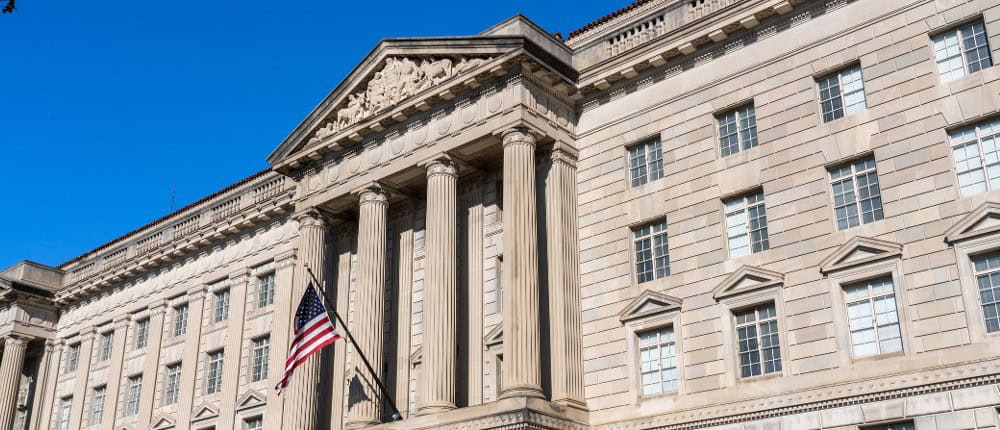The world’s second-largest economy is teetering on the brink of deflation.
Following a slower-than-expected economic recovery in the wake of the pandemic, the Chinese economy has struggled to return to growth. Most recent CPI results are flat year-over-year but have entered negative territory this month after posting a 0.2% decline in June. The country’s government is trying desperately to return to pre-pandemic growth levels and officials are targeting an aggressive GDP growth of 5.00% this year. However, this recovery is proving fragile in the face of a crumbling domestic property market and softening demand for manufactured goods. In an effort to reach their growth targets, China’s central bank is moving in sharp contrast to most other developed economies by continuing to lower rates and implementing fiscal stimulus policies. Analysts at Nomura are predicting at least two more rounds of rate cuts as well as an ample injection of liquidity from the central bank in response to the most recent CPI data. However, this forthcoming stimulus may come in a different form than “traditional” Chinese stimulus programs of the recent past. While historically the government has sought to jumpstart its economy by investing in big-ticket infrastructure and property development projects, many expect a shift in focus to target consumers more directly. All of this comes at an especially significant time in the course of United States-China economic relations. This past week, U.S. Secretary of Treasury, Janet Yellen, visited Beijing to meet with top Chinese diplomats to discuss the increasingly fierce economic competition between the two countries. Early reactions to the talks have been described as “productive,” and based on Secretary Yellen’s response, there is hope that the two economies can maintain a cooperative relationship going forward despite deepening geopolitical tensions. Despite no specific policies or actions having been announced following the visit, it has been a step in the direction of establishing more open communication between the two nations.
Federal Reserve's top regulatory official outlines a potential plan to increase capital requirements and regulations for large U.S. banks.
Fed Vice Chair for Supervision, Michael Barr, announced his goal of implementing additional regulatory reform for the U.S. banking sector that includes a more consistent framework for banks to estimate risk, expand annual stress tests of bank health, and increase the level of capital that banks are required to maintain. His plan is for the largest banks (those with over $100 billion in assets) to be required to maintain an additional 2.00% of capital. Barr correctly pointed out that most large banks already have capital at levels above his proposed new standards as many banks, especially those that are highly rated, maintain capital levels that significantly exceed regulatory minimums as a buffer to absorb any unexpected financial pressures. The proposed regulatory reform is likely a response to public perception of the U.S. banking system in the wake of the three bank failures that occurred earlier this year. For Barr’s plan to be implemented, it would have to be approved by several regulatory bodies and could take anywhere from several months to several years to be fully executed. Any potential changes in capital levels or additional costs associated with implementing any new regulations will have to be considered when evaluating the creditworthiness of U.S. banks.
Preview of U.S. banks second-quarter earnings.
The largest U.S. banks will report second-quarter earnings on Friday. Here’s a look at what we and the market are expecting:
The annual Federal Reserve Stress Tests were released at the end of June and all U.S. banks performed very well eclipsing their performance from last year. The stress test results suggest that most banks would see their stress capital buffers lowered, however, we aren’t convinced this will cause banks to release any capital. We expect to hear commentary from the largest banks about proposed regulatory capital changes (see above), and we believe that capital levels will likely increase or stay flat from the prior quarter as the banks bolster their balance sheets against a slowing U.S. economy.
Asset quality will be top of mind as the market broadly expects U.S. banks to post the largest quarterly loan write-downs since the onset of COVID-19 in 2020. Banks have been steadily provisioning against loan losses over the last several quarters, so we do not expect these write-downs to be a material credit concern; however, there has been weakness surfacing in credit cards and subprime autos, which will be key investor data points. Commercial real estate (CRE) lending is also at the forefront with Wells Fargo telling investors last month that it had provisioned an extra $1 billion against its CRE exposure. Asset quality has been unsustainably strong since the pandemic, and loans have performed better than their 2019 levels; this may mean we may finally start to see some normalization in loan loss metrics for U.S. banks this quarter.
Net-interest margins and deposit betas (how quickly banks must reprice deposits) are the final areas that we note. U.S. banks have seen substantial benefits from rising rates, and the largest banks have been able to hold off on repricing deposits due to their size and quality after the regional banking collapses in March. Net interest margins are likely close to their peak, and with another Fed rate hike on the horizon, money market funds are becoming more and more attractive to investors. We expect that the benefits of rising rates may start to decrease, and U.S. banks may have to increase their deposit rates to keep funds on hand which would erode lending income.



